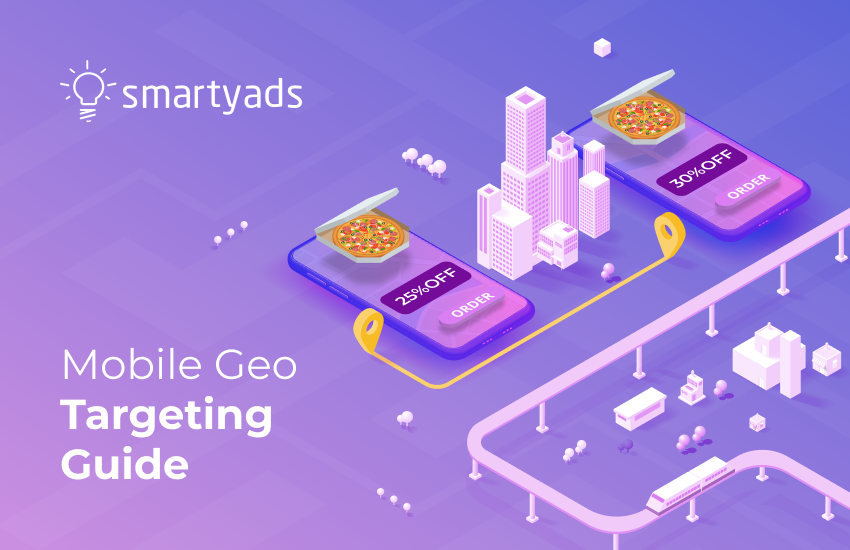Delivering your message to the right audience at the right time and place is probably one of the most important keys to a successful marketing campaign.
You should know your audience well, send your message via channels they use and make sure they convert after the initial encounter with your brand. It would sound like science fiction some decades ago, but current mobile advertising technologies allow you to find your target audience in the exact space where they can act on your ad as soon as possible.
How? The answer lies in mobile marketing.

What is geo targeting on mobile devices?
Geo targeting on mobile devices is a type of targeting within the DSP platform that uses GPS, Wi-Fi networks, mobile apps data, and IP geolocation data to reach potential customers within a precise physical location.
It is one of the most precise targeting features in programmatic advertising as it enables you to narrow down your audience to the vicinity of a certain city, district, or even a street.
Mobile geotargeting also allows you to aim for a specific zip code or parking lot which really makes your campaign hyper-local (hence, hyper-local targeting is another name for this feature).
The geo targeting mobile feature is often used to target users looking for stores and services nearby, the so-called "near me" searches, which makes this type of targeting very helpful for both advertisers and customers.
Geo location-based marketing can also be applied to increase awareness of your store target locations for the users who currently stay around, which will increase sales.
Also, read what is mobile retargeting here.
What is the difference between mobile geo-targeting and geo-fencing?
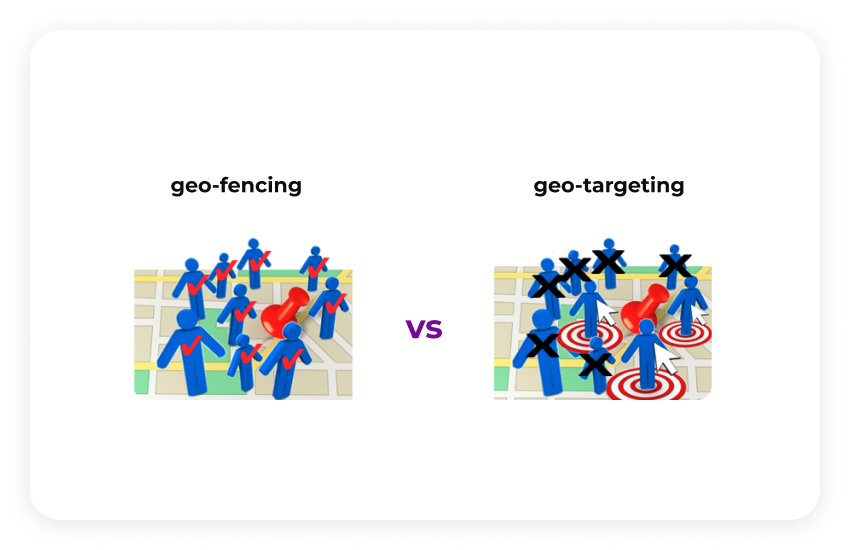
When it comes to the distinction between geofencing vs geo targeting, it might seem like a subtle one, but it's important to differentiate the two.
Geotargeting mobile is location-based targeting that works for users found within a certain area but it also allows to take into account their interests and preferences, which makes location targeting consumers even more precise.
Geofencing, in contrast, allows you to trigger your message to every potential customer that enters or exits your restricted area aka "geo fence" (hence, geo-fencing). The essential part of it is that once the user gets inside this defined fence, the trigger works and they get a push notification or email alert about local deals from your nearby-located businesses.
Both features can be used for many purposes, but in this article, we'll focus on geo targeting on mobile devices.

What are the benefits of mobile location targeting for advertisers?
With geo targeting, mobile marketing is becoming precise and effective like never before. There are a lot of reasons for this, and we'll discuss a couple of them.
The prevalence of mobile users and mobile devices
Nowadays, it is hard to find a place in the world without a smartphone owner. More than half of the world's population (66%) has a mobile device.
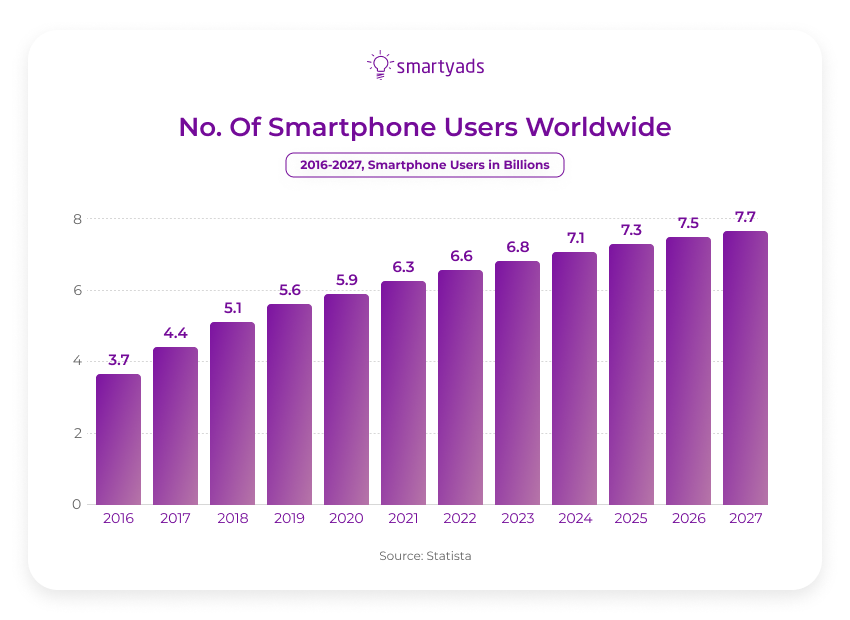
Mobile device usage is becoming more and more prevalent. According to Emarketer, US consumers spend over 4 hours with mobile Internet daily.
This is a huge amount of mobile apps and digital media time which has a lot of potential for mobile advertising. With the help of mobile geo-targeting, you use this time to show relevant ads via in-app or web campaigns based on mobile location data.
Relevance of mobile advertising for the target audience
Thanks to location targeting and location tracking, you can make use of real-time information about the geographical location of your potential customers to send them relevant ads. Combined with other targeting options on your demand-side platform, such as demographic or behavioral, geo targeting allows you to pick the most interested users at the right location.
They are most likely to act on your ads, especially if they get your business' message at the right time. Moreover, you can send a relevant offer to users who are looking for your exact services via "near" me searches. In 2019 such searches grew 136% compared to 2018, and in the 2020s this trend is likely to continue.
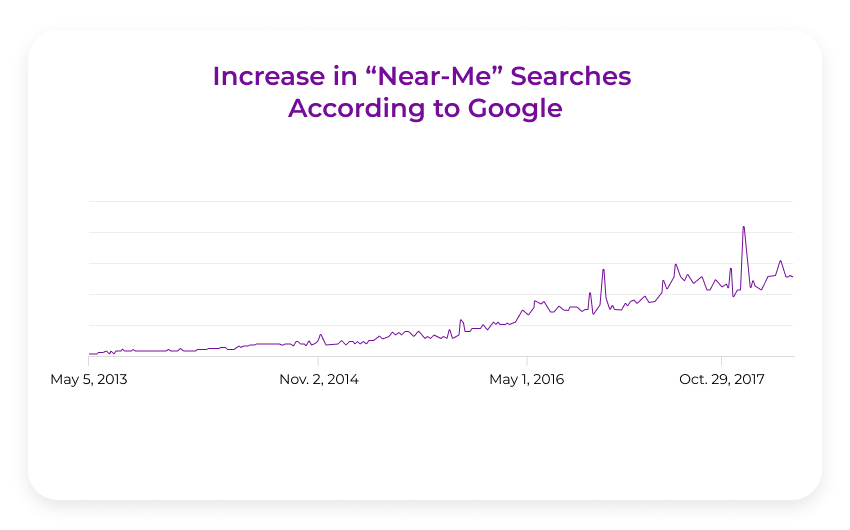
Better reporting
Understanding your audience has always been the key element for reaching success in advertising. With the increasing popularity of mobile ads, this process gets more and more effective and geo targeting can play a great part here.
GPS tracking and reporting features for mobile DSPs and ad networks can provide you with lots of in-depth insight data regarding user behavior and their reactions to your offers.
You can get a clear understanding of how, when, and where your target audience usually engages with your ads. So, even if the prospect doesn't end up purchasing your products, you will still get valuable information for your future communication.
Mobile geo targeting advertising examples
To get a better understanding of how exactly mobile geo targeting works, let's review some examples:
- The classic example of mobile geo-targeting can look like this: imagine a hungry customer choosing where and what to eat for lunch. They take their smartphone, look at their mobile apps, choose maps and conduct a "near me" search of local restaurants, cafes, or shopping malls and their locations. In most cases, as a result, they get a couple of offers from local places and usually choose among one of these. You can spend hundreds of dollars on desktop campaigns during working hours and hope these users will eventually come to your place for the next lunch. Or you can use proximity targeting during lunch hours with specific offers based on their interests. Guess which campaigns will be more successful.
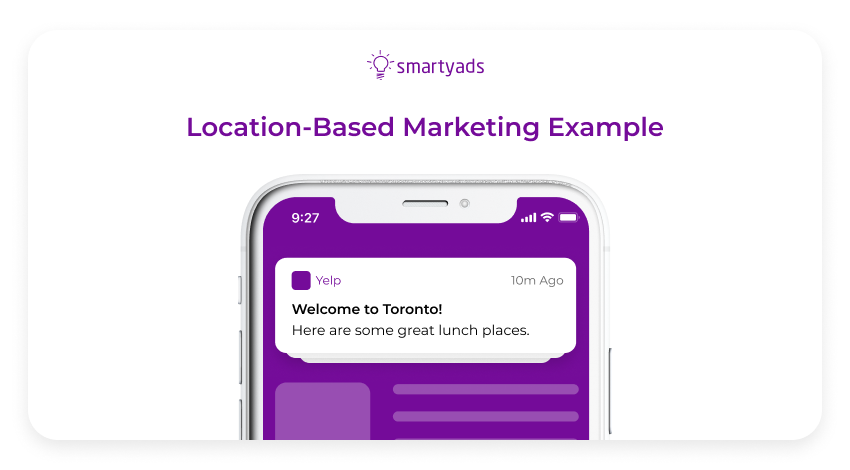
- Another example of a case where you can successfully apply geo-targeting is when you scale up your business or simply build brand awareness. Imagine opening a new shop at the new current location. How can you attract clients and save time? That's right, hyper-local targeting can help you out with this one too! You can deliver your messages directly to the locals so that people get to know you're there even before you actually open. And once you do, there's already a steady stream of new clients with a positive customer experience.
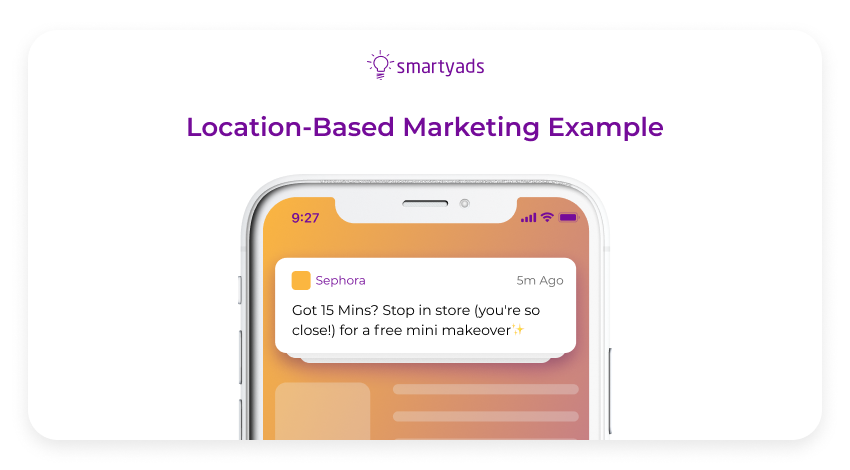
Additionally, you can target users in the following ways:
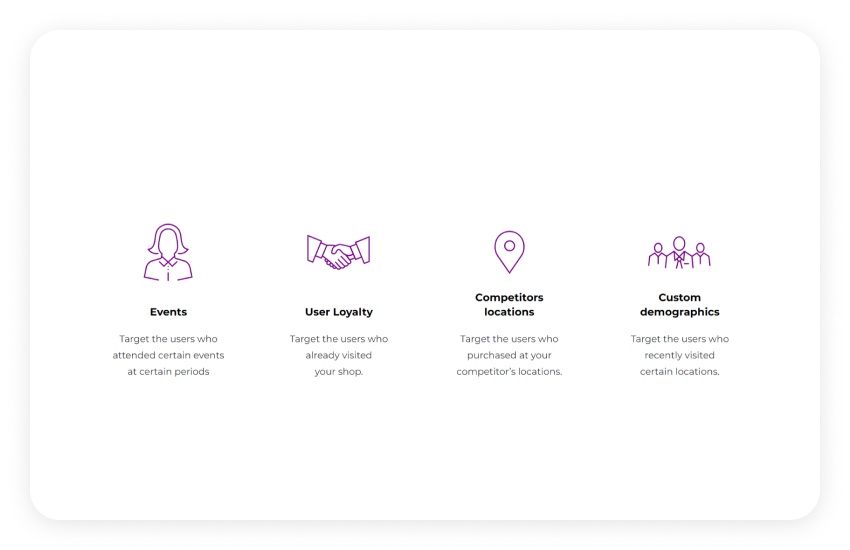
Conclusions
Mobile geo-targeting advertising is a powerful tool for both experienced advertisers and those who are only starting out with new businesses. It is useful for brand awareness campaigns, for the promotion of new offers, and for returning consumers who live nearby.
With the ever-increasing amount of mobile users and the growing popularity of "near me" searches, geo-targeting on mobile devices can play a decisive role in the future of your business. Using this feature for your campaigns is no sweat, as it is already available on the DSP and requires only a few clicks to set up.
Reach your customers at the right place and at the right time with SmartyAds!

